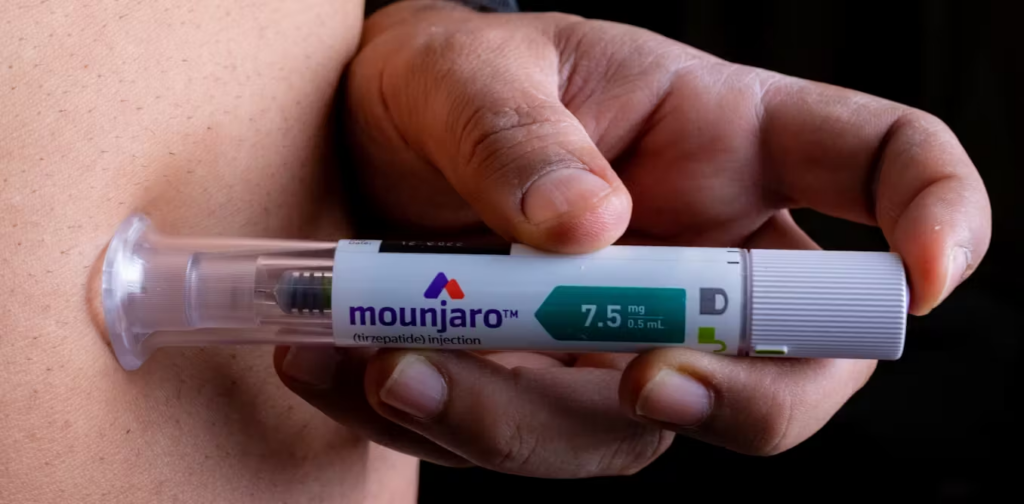Mounjaro Injection: Type 2 Diabetes Treatment
Mounjaro is the brand name subcutaneous injection that is prescribed for type 2 diabetes treatment. The active agent is tirzepatide. It is used to help manage the blood sugar levels in adults with type 2 diabetes. In type 2 diabetes, the body does not respond to insulin in the typical manner. Eventually, the pancreas produces… Read More
Top Doctors For Mounjaro Injection: Type 2 Diabetes Treatment Treatments
Top Hospitals For Mounjaro Injection: Type 2 Diabetes Treatment Treatments
Mounjaro Injection: Type 2 Diabetes Treatment
Mounjaro is the brand name subcutaneous injection that is prescribed for type 2 diabetes treatment. The active agent is tirzepatide. It is used to help manage the blood sugar levels in adults with type 2 diabetes. In type 2 diabetes, the body does not respond to insulin in the typical manner. Eventually, the pancreas produces less insulin. Insulin is the hormone that helps the body move sugar from the blood into the cells where they are used.
Mounjaro is a type of drug called a dual glucose-dependent insulinotropic polypeptide (GIP) and glucagon-like peptide-1 (GLP-1) receptor agonist. Mounjaro is only for adults with type 2 diabetes; it is not approved for use in children. The drug is not approved for use in individuals with type 1 diabetes, as based on how the drug works, it may not be effective in that condition. The drug also may not be safe for individuals who have had pancreatitis.
What happens to the body when it develops type 2 diabetes?
When an individual eats, the body naturally produces a hormone called incretins. These hormones prompt the pancreas to release insulin, and they help the individual feel full. Incretins produce the incretin effect, which helps regulate the blood sugar levels within a range that is healthy for an individual. In type 2 diabetes, the incretin effect is greatly diminished. This then leads to hyperglycemia, which is a high blood sugar level. Hyperglycemia over time will lead to the complications seen in diabetes, like damage to the eyes, the kidneys, and certain tissues. The high sugar level can also predispose an individual to cardiovascular problems and stroke. Some other symptoms that may be seen in type 2 diabetes are:
- Weight loss
- Frequent urination
- Extreme thirst
- Fatigue
- Blurred vision

How does the drug work?
Mounjaro’s mechanism of action is to imitate the effects of hormones called incretins, specifically GIP and GLP-1. It accomplishes this by activating specific receptors in the body. By activating these receptors, the drug lowers fasting and post-meal blood sugar. The drug does this in the following ways:
- Making the body extra sensitive to insulin
- Signalling the pancreas to release more insulin after a meal
- Stopping the liver from making additional sugar
Mounjaro also has the effect of slowing down the movement of food through the digestive tract, and this can make an individual feel full for a longer period. This drug can help in managing the blood sugar level, especially when paired with dieting and exercise.
How is the drug administered?
Mounjaro comes in a liquid solution in the form of prefilled pens. They are administered subcutaneously by the doctor; they can also be self-administered. The drugs are injected once a week. The typical starting dose is 2.5mg and after four weeks, the doctor will likely increase the dose to about 5mg per week. It is worth noting that the doctor will continue to increase the dose if the blood sugar remains too high.
The dose is usually increased by 2.5mg every four weeks until the blood sugar levels are within a range that is healthy for the individual. The maximum dose of Mounjaro is 15mg a week. In the instance that an individual misses a dose, they can take the drug as soon as they remember, up to 4 days late. If more than four days have passed, the person should skip that dose and take the next dose on the regularly scheduled day. Mounjaro should be taken at least three days apart. A medication reminder will greatly be beneficial to an individual to ensure that they do not miss a dose.
When will the drug’s effects be felt?
Mounjaro starts working after the first dose has been administered. However, it may take several weeks or even months before the effect’s full impact on the sugar level is seen. This is because the drug dose is gradually increased by the doctors until they find the right amount for the individual. The doses are increased usually after every four weeks. The doctor will ultimately prescribe the smallest dose that will provide the desired effects. The doctor will also inform the patient about what to expect during the Mounjaro treatment, including how often their blood sugar levels will be monitored. Mounjaro is intended to be a long-term treatment. If the doctor determines that the drug is safe and effective for the individual, they will likely take it long-term.
What are the side effects of Mounjaro?

The drug can cause mild or severe side effects. The mild side effects include:
- Abdominal pain
- Mild allergic reactions
- Injection site pain
- Constipation
- Heartburn
- Nausea
- Diarrhea
- Reduced appetite
These mild side effects may disappear after some days or weeks. However, the patient should inform their healthcare provider if they do not go away. The severe side effects of Mounjaro are not common, but they can occur. The patient should seek emergency health services immediately or inform their doctor if they have any severe side effects, especially if these effects are life-threatening. Some of the severe side effects include:
- Acute pancreatitis, some of the symptoms that include vomiting, back pain and severe abdominal pain that just does not go away
- Severe digestive problems like severe nausea, vomiting, and diarrhoea which may lead to dehydration and kidney issues
- Severe allergic reactions
- In acute gallbladder disease like gallstones, the symptoms which may come in the form of nausea and vomiting, fever, pain in the abdomen
- Hypoglycemia, especially when Mounjaro is used along with certain other medications. The symptoms are usually mild but can become severe if not treated immediately. These symptoms can be in the form of hunger, increased heartbeat, sweating, irritability, shaking, dizziness, headache, loss of consciousness, and coma.
Can Mounjaro cause allergic reactions?
As with most other drugs, certain individuals can have an allergic reaction after they have used Mounjaro. Some of the symptoms of a mild allergic reaction include:
- Flushing
- Skin rash
- Itchiness
More severe allergic reactions are possible but very rare. Symptoms of severe allergic reactions can include:
- Trouble breathing
- Swelling of the tongue, the throat or the mouth
- Swelling under the skin, more commonly on the eyelid, the lips, the hands or the feet
Meditour agencies or medical travel agencies can help provide individuals who cannot afford this treatment in their countries viable options. These options come via overseas medical treatment and are a form of medical tourism or health tourism.
























































